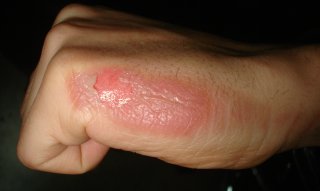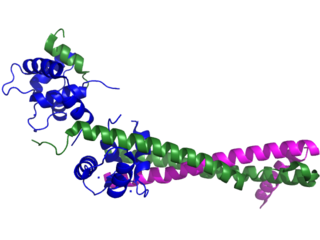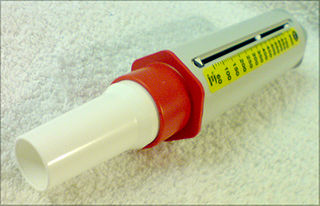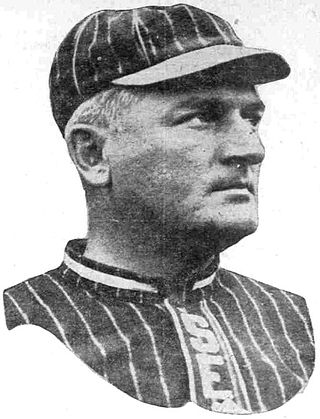
Body mass index (BMI) is a value derived from the mass (weight) and height of a person. The BMI is defined as the body mass divided by the square of the body height, and is expressed in units of kg/m2, resulting from mass in kilograms (kg) and height in metres (m).

Impetigo is a bacterial infection that involves the superficial skin. The most common presentation is yellowish crusts on the face, arms, or legs. Less commonly there may be large blisters which affect the groin or armpits. The lesions may be painful or itchy. Fever is uncommon.

The Cocoanut Grove fire was a nightclub fire which took place in Boston, Massachusetts, on November 28, 1942, and resulted in the deaths of 492 people. It is the deadliest nightclub fire in U.S. history and the second-deadliest single-building fire. The Cocoanut Grove was one of Boston's most popular nightspots, attracting many celebrity visitors. It was owned by Barnet "Barney" Welansky, who was closely connected to the Mafia and to Mayor Maurice J. Tobin. Fire regulations had been flouted: some exit doors had been locked to prevent unauthorized entry, and the elaborate palm tree décor contained flammable materials. The air-conditioning used flammable gas because of the wartime shortage of freon.

A burn is an injury to skin, or other tissues, caused by heat, cold, electricity, chemicals, friction, or ultraviolet radiation. Most burns are due to heat from hot liquids, solids, or fire. Burns occur mainly in the home or the workplace. In the home, risks are associated with domestic kitchens, including stoves, flames, and hot liquids. In the workplace, risks are associated with fire and chemical and electric burns. Alcoholism and smoking are other risk factors. Burns can also occur as a result of self-harm or violence between people (assault).

Troponin, or the troponin complex, is a complex of three regulatory proteins that are integral to muscle contraction in skeletal muscle and cardiac muscle, but not smooth muscle. Measurements of cardiac-specific troponins I and T are extensively used as diagnostic and prognostic indicators in the management of myocardial infarction and acute coronary syndrome. Blood troponin levels may be used as a diagnostic marker for stroke or other myocardial injury that is ongoing, although the sensitivity of this measurement is low.

The peak expiratory flow (PEF), also called peak expiratory flow rate (PEFR) and peak flow measurement, is a person's maximum speed of expiration, as measured with a peak flow meter, a small, hand-held device used to monitor a person's ability to breathe out air. It measures the airflow through the bronchi and thus the degree of obstruction in the airways. Peak expiratory flow is typically measured in units of liters per minute (L/min).

Alpha-thalassemia is a form of thalassemia involving the genes HBA1 and HBA2. Thalassemias are a group of inherited blood conditions which result in the impaired production of hemoglobin, the molecule that carries oxygen in the blood. Normal hemoglobin consists of two alpha chains and two beta chains; in alpha-thalassemia, there is a quantitative decrease in the amount of alpha chains, resulting in fewer normal hemoglobin molecules. Furthermore, alpha-thalassemia leads to the production of unstable beta globin molecules which cause increased red blood cell destruction. The degree of impairment is based on which clinical phenotype is present.

William Neal Browder is an American country music singer-songwriter, known professionally as T. G. Sheppard. He had 14 number-one hits on the US country charts between 1974 and 1986, including eight consecutive number ones between 1980 and 1982.
In the United Kingdom, Ireland, and parts of the Commonwealth, consultant is the title of a senior hospital-based physician or surgeon who has completed all of their specialist training and been placed on the specialist register in their chosen speciality. Their role is entirely distinct from that of general practitioners, or GPs.
Total body surface area (TBSA) is an assessment of injury to or disease of the skin, such as burns or psoriasis.

Harry Sterling Wolverton, nicknamed "Fighting Harry", was an American professional baseball player. He played all or part of nine seasons in Major League Baseball from 1898 through 1905 and 1912. He played for the Chicago Orphans, Philadelphia Phillies, Washington Senators, Boston Beaneaters, and New York Highlanders, primarily as a third baseman. He also managed the Highlanders in 1912.

Jackson Riggs "Warhorse" Stephenson was an American left fielder in Major League Baseball. Nicknamed Old Hoss, Stephenson played for the Cleveland Indians from 1921 to 1925 and the rest of his career from 1926 to 1934 with the Chicago Cubs. Benefiting from the offensive surge of the late 1920s and early 1930s, he retired with a career batting average of .336, although he was only a full-time player from 1927 to 1929 and in 1932, with injuries and platooning limiting his role for the rest of his career.
Felix Earl Browder was an American mathematician known for his work in nonlinear functional analysis. He received the National Medal of Science in 1999 and was President of the American Mathematical Society until 2000. His two younger brothers also became notable mathematicians, William Browder and Andrew Browder.

A burndown chart or burn down chart is a graphical representation of work left to do versus time. The outstanding work is often on the vertical axis, with time along the horizontal. A burn down chart is a run chart of remaining work. It is useful for predicting when all of the work will be completed. It is often used in agile software development methodologies such as Scrum. However, burn down charts can be applied to any project containing measurable progress over time.
Julia Frances McHugh Morton was an American author and botanist. She was research professor of biology, and director of the Morton Collectanea at the University of Miami. She was elected a Fellow of the Linnean Society of London in 1974. Well known as a lecturer on toxic, edible and otherwise useful plants, she wrote 10 books and 94 scientific papers, and contributed to an additional 12 books and 27 papers.

Amiphenazole (Daptazile) is a respiratory stimulant traditionally used as an antidote for barbiturate or opiate overdose, usually in combination with bemegride, as well as poisoning from other sedative drugs and treatment of respiratory failure from other causes. It was considered particularly useful as it could counteract the sedation and respiratory depression produced by morphine but with less effect on analgesia. It is still rarely used in medicine in some countries, although it has largely been replaced by more effective respiratory stimulants such as doxapram and specific opioid antagonists such as naloxone.
The Baux score is a system used to predict the chance of mortality due to burns. The score is an index which takes into account the correlative and causal relationship between mortality and factors including advancing age, burn size, the presence of inhalational injury. Studies have shown that the Baux score is highly correlative with length of stay in hospital due to burns and final outcome.

The Wallace rule of nines is a tool used in pre-hospital and emergency medicine to estimate the total body surface area (BSA) affected by a burn. In addition to determining burn severity, the measurement of burn surface area is important for estimating patients' fluid requirements and determining hospital admission criteria.

Study 329 was a clinical trial which was conducted in North America from 1994 to 1998 to study the efficacy of paroxetine, an SSRI anti-depressant, in treating 12- to 18-year-olds diagnosed with major depressive disorder. Led by Martin Keller, then professor of psychiatry at Brown University, and funded by the British pharmaceutical company SmithKline Beecham—known since 2000 as GlaxoSmithKline (GSK)—the study compared paroxetine with imipramine, a tricyclic antidepressant, and placebo. SmithKline Beecham had released paroxetine in 1991, marketing it as Paxil in North America and Seroxat in the UK. The drug attracted sales of $11.7 billion in the United States alone from 1997 to 2006, including $2.12 billion in 2002, the year before it lost its patent.
A pediatric burn is an injury to the skin or underlying tissue in person under the age of 18, and is globally the most common type of pediatric injury. Burns can be caused my heat, cold, chemical or irritation. Most burns do not require hospital admission but a small percentage are serious and need to be transferred to specialist burn centers, where a multidisciplinary team of specially trained doctors, including surgeons and anesthesiologists can care for the child. Mortality rates at centers like this at are recorded at 3%.














